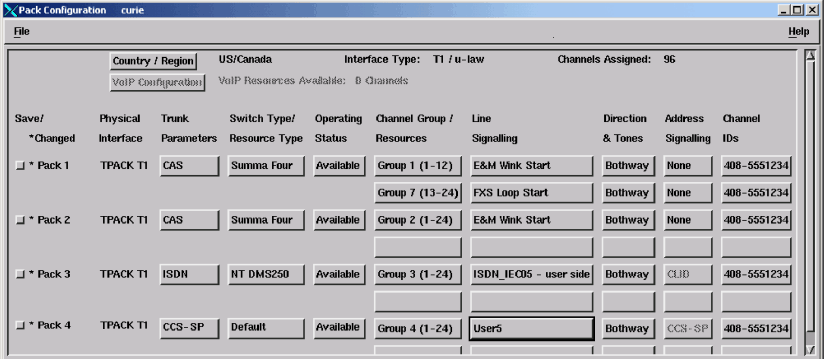You can mix CAS, ISDN, and another common channel signaling protocol on the same Blueworx Voice Response system. However, these cannot coexist on the same trunk at the same time so you must create a channel group for each protocol, as shown in Figure 1.
A maximum of 16 trunks (384 channels) can be configured on a T1 system.
Channel associated signaling (CAS)
The default Line Code (AMI/ZCS) and Framing Mode (D3/D4) are assumed. To use B8ZS Line Code or ESF Framing Mode, you must use System Configuration parameters to set them (see T1 line code, framing mode, and framing format.)

ISDN without NFAS
The switch to which Blueworx Voice Response is connected must be configured as network side, because Blueworx Voice Response can operate only as user side.
Only one version of ISDN signaling can be used in the system at any time. For example, with an AT&T 5ESS switch, you cannot run 5E8 user side on one trunk and 5E9 user side on another trunk.
Other common channel signaling (CCS)
Select the Default Switch Type, because the custom-written signaling process software might support any range of switches.
The channels on a trunk can be allocated to more than one channel group. For example, on trunk 5, channels 1 through 12 could be allocated to group 5 and use signaling process User5, while channels 13 through 24 could be allocated to group 6 and use signaling process User6.
The default Line Code (AMI/ZCS) and Framing Mode (D3/D4) are assumed. If you need to use B8ZS Line Code or ESF Framing Mode, you must use System Configuration parameters to set them (see T1 line code, framing mode, and framing format).